In the article Consequences of Climate Change, we shared lessons about the availability of freshwater worldwide and extreme weather events. We explained that if students leave the elementary grades knowing that freshwater is a limited resource and understanding how and why extreme weather events occur, they will be well poised to understand the consequences of climate change in later grades. Here, we’ve shared books that support these lessons. Most books are nonfiction, although a few are fiction picture books. When appropriate, we’ve also indicated which lessons pair well with each title.
Water Availability
Keeping Water Clean. 2000. Helen Frost. Nonfiction. Grades K-1.
Early readers will learn that all living things need clean water and there are many things we can do to keep our water clean. This book, part of the Water series from Pebble Books, is well suited for use with the grades K-2 lesson Water Scarcity.
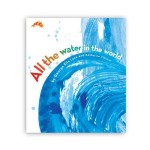
All the Water in the World. 2011. George Ella Lyon and Katherine Tillotson. Nonfiction picture book. Grades K-3.
Students are reminded that the water we have on Earth now is all we have—and it is precious. Cycling from ground to ocean to air, water is plentiful in some places, but in others so rare that life waits for its magic touch. This beautifully illustrated and written book is well suited for use with the grades K-2 lesson Water Scarcity.
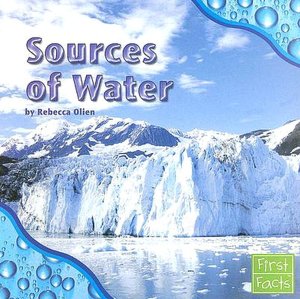
Sources of Water. Rebecca Olien. 2005. Nonfiction. Grades 1-3.
A look at Earth’s saltwater and freshwater sources, including oceans, lakes and rivers, groundwater, and glaciers. An activity allows students to create a model of an aquifer. This book is well suited for use with the grades K-2 lesson Water Scarcity.
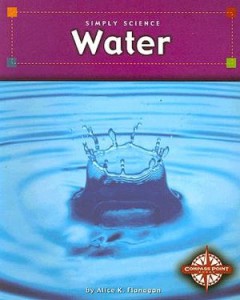 Water. Alice K. Flanagan. 2001. Nonfiction. Grades 2-4.
Water. Alice K. Flanagan. 2001. Nonfiction. Grades 2-4.
This book gives a comprehensive look at water, including the water cycle, water as a solid, liquid, and gas, salt water and freshwater, water pollution, and how we obtain clean water for everyday use. A table of contents, an index, a glossary, and “Did You Know?” and “Want to Know More?” sections provide opportunities for instruction and practice with nonfiction text features. This book is well suited for use with the grades 3-5 lesson Water Scarcity.
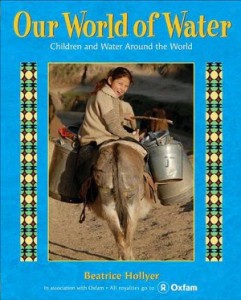 Our World of Water. Beatrice Hollyer. 2008. Nonfiction. Grades 4-5.
Our World of Water. Beatrice Hollyer. 2008. Nonfiction. Grades 4-5.
In text and photographs, this book follows a day in the life of seven children from different countries with an emphasis on the role of water. The countries are Bangladesh, Ethiopia, Mauritania, Peru, Tajikistan, and the United States. Sources of water vary among the locations and the impacts on the school-age children and their families are different. One family gets water from melting glaciers, another spends hours walking to and from water holes, and another stores water in sheds before the winter freezes their wells. Each child is featured in six-pages with many photographs. Additional pages give facts about water use around the world. A glossary includes words from the different cultures. This book is well suited for use with the grades 3-5 lesson Water Scarcity.
Extreme Weather Events
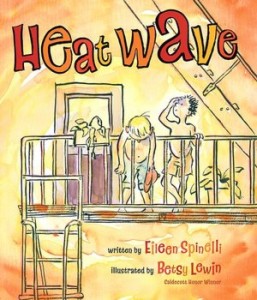
Heat Wave. Eileen Spinelli. 2007. Picture book. Grades K-3.
Long before air conditioning was a fixture of homes and businesses, a heat wave struck the fictional town of Lumberville in this amusing story of coping with extreme hot weather. When the uncomfortable residents, adults and children, finally were able to fall asleep, all had the same dream of cooling rain. Along with enjoying Betsy Lewin’s drawings of frazzled townspeople, students could imagine how they might cope with a heat wave today.
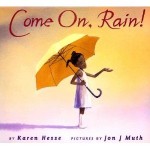
Come On, Rain! Karen Hesse. 1999. Picture book. Grades K-3.
Distinctive watercolors and lyrical text capture one afternoon on a city street during a heat wave. From the steps of her home, a young girl observes drooping plants, panting cats, baking pavement, and listless neighbors while she looks for rain clouds. But then a breeze…and a downpour bring her friends and their mothers dancing out into the street. Pairs well with Heat Wave by Eileen Spinelli.
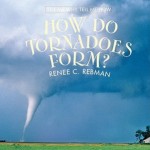
How Do Tornadoes Form? Renee C. Rebman. 2011. Nonfiction. Grades 3-5.
Learning about tornadoes and how they occur is the only way to prepare for them, according to the author of this book. She proceeds to describe how tornadoes and other wind events (waterspouts and dust devils) form and how meteorologists detect and locate funnel clouds. Sprinkled through the book are “Now I Know!” boxes with questions (and the answers) drawn from the text. This book is well suited for use with the grades K-2 lesson What Is a Tornado?
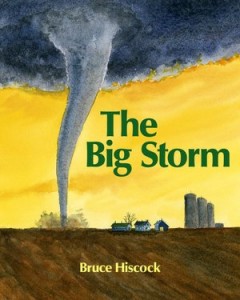 The Big Storm. Bruce Hiscock. 2008. Nonfiction. Grades 4-5.
The Big Storm. Bruce Hiscock. 2008. Nonfiction. Grades 4-5.
From March 31 to April 6, 1982, a cold front, carried by the jet stream, brought extreme weather to all parts of the United States. Unstable air brought blizzards to the Sierra Nevada and the Rockies, severe storms and tornados across the Plains and the Midwest, and finally pummeling rain that turned back to snow over the Appalachian Mountains and Eastern seaboard. The author’s watercolors show the impacts on people living in the storm’s path—meteorologists at work, highway accidents, tornado-damaged neighborhoods, and rural and urban school kids playing in snow. His information-packed graphics show how changes in air pressure and temperature created this massive weather event.
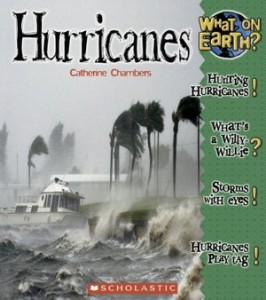 Hurricanes. Catherine Chambers. 2005. Nonfiction. Grades 3-5.
Hurricanes. Catherine Chambers. 2005. Nonfiction. Grades 3-5.
In question-and-answer format, this book provides a wealth of information about the causes of hurricanes, where they occur, how people and wildlife cope, and the damage of some major hurricanes. Inserts give historical facts, such as the fastest moving, origin of the word hurricane, naming, and how hurricanes help balance heat and moisture around Earth. Students can take a one-page quiz with answers provided from the text. From the What on Earth series, the book is illustrated with news photographs, drawings, and titles set in a whirling format. This book is well suited for use with the lessons Hurricanes 1: The Science of Hurricanes and The Eye of the Hurricane.
Extreme Weather. Michael H. Mogil and Barbara G. Levine. 2008. Nonfiction. Grades 4-5.
Part of the Insiders series and packed with information and dramatic, double-page graphics, this book is a presentation of extreme weather on our planet that will fascinate your students. The first half of the book explains weather phenomenon and the second half highlights actual weather events in places all over the world.
This article was written by Kate Hastings, a youth librarian at the Upper Arlington Public Library near Columbus, Ohio. Email the author at beyondweather@msteacher.org.
Copyright February 2012 – The Ohio State University. This material is based upon work supported by the National Science Foundation under Grant No. 1034922. Any opinions, findings, and conclusions or recommendations expressed in this material are those of the author(s) and do not necessarily reflect the views of the National Science Foundation. This work is licensed under an Attribution-ShareAlike 3.0 Unported Creative Commons license.




